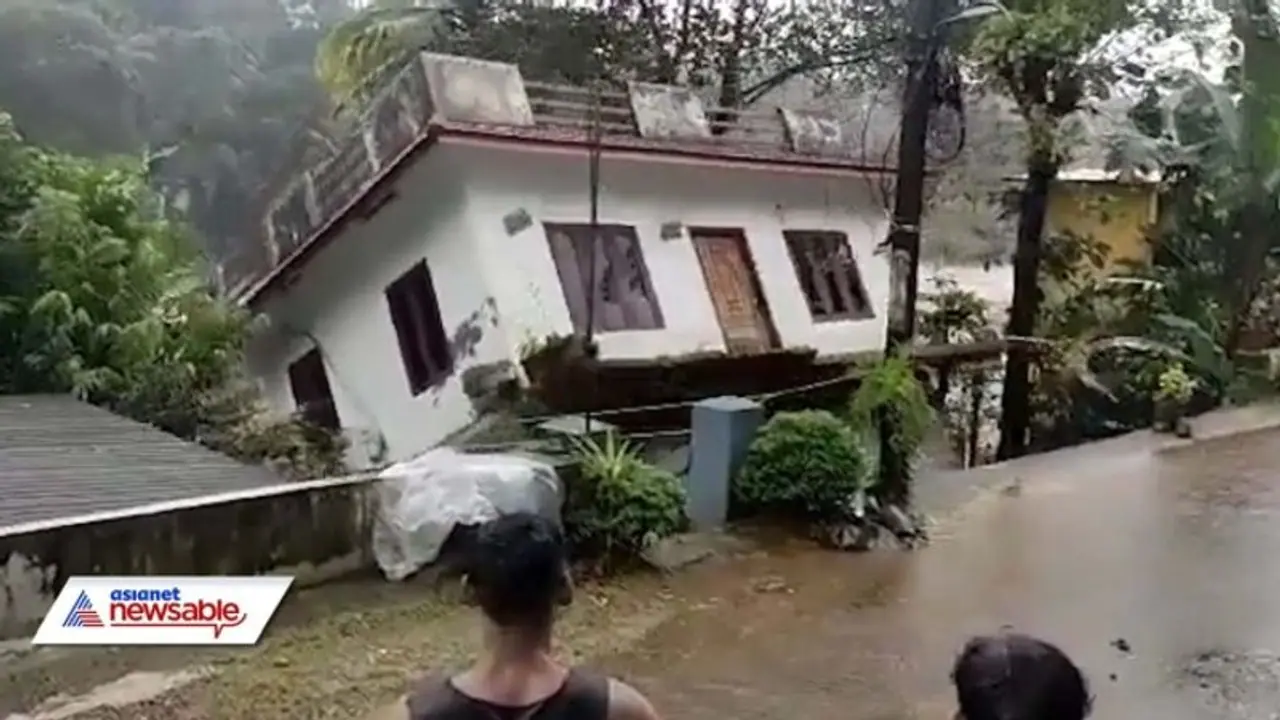The report, uploaded on the CAG website on November 11 refers to shortcomings with regard to capacity building, flood forecasting and land cover use.
The Comptroller and Auditor General of India has compiled a report which exposes glaring lapses with regard to the preparedness and response to floods in Kerala between 2014-19. The report, uploaded on the CAG website on November 11 refers to shortcomings with regard to capacity building, flood forecasting and land cover use which contributed to the flood situation in the state. Let's take a look the points mentioned in the report.

Shortcomings with regard to planning and capacity building
* Flood plains of Kerala are yet to be demarcated and flood plain zoning legislation remains to be enacted.
* Provisions in the Kerala State Water Policy 2008 requiring the preparation of a state-level master plan for water resources development, formulation of master plans for the major rivers of the state and constitution of a state-level authority for coordinating all water-related activities at the river basin level were not complied with.
* No large-scale flood hazard map is available in the state; the state's disaster management plan includes a flood susceptibility map not conforming to Central Water Commission criteria for the flood-prone areas. The Kerala government, in its defence, said that the Water Resources ministry, CWC and others were responsible for providing the flood susceptibility map.
* The full-time residential training institute for the civil defence at Thrissur has not served the intended purpose even five years after being set up.
* Even though the memorandum of understanding with regard to the Aapda Mitra scheme was inked in November 2016, procedural delay at various stages resulted in emergency responder kits being handed out only in December 2019 -- one year after the first batch of Aapda Mitra volunteers completed their training. The disaster response skills acquired by the volunteers could not be used for the benefit of the local community despite the severe floods affecting the state in August 2019.
Shortcomings with regard to flood forecasting and reservoir operation
* Only six rain gauges against the requirement of 32 gauges (as per existing BIS norms) are available for rainfall estimation in the Periyar basin by IMD.
* No flood forecasting stations were set up in the state even though the Central Water Commission had installed 275 flood forecasting stations across the country by 2017. Besides, the Kerala government also did not submit the list of reservoirs or areas where inflow forecasting stations had to be set up to the CWC.
* Even after a lapse of five years, a project for obtaining real-time data on rainfall, streamflow etc. failed to deliver reliable data on a real-time basis.
* A State Emergency Operations Centre, equipped with a state-of-the-art communications network and an intelligent Decision Support System capable of predicting and early warning of major hydro-meteorological hazards and support for emergency operation was envisaged in the Disaster Management Plan 2016. The system remains unreliable in terms of predicting and giving early warning on major hydro-meteorological hazards two years since the targeted date of completion of April 2019. The system's effective functioning is dependent on externally-sourced real-time data, which is yet to be made available.
* During the 2018 floods in the state, communication infrastructure was non-operational in some areas, including dam sites and government offices.
* The Idukki reservoir rule curve that was framed in 1983 was not reviewed until after the 2018 floods. In fact, there was no rule curve in place for the guidance of dam operators at Idamalayar reservoir when the 2018 floods happened.
Shortcomings in land cover use
* The free flow of the Cheruthoni river bed was obstructed by the continuing presence of encroachments which resulted in damages during the 2018 floods.
* Twenty years since the Cochin International Airport's commissioning and repeated instances of severe flooding in the area, neither the irrigation, revenue and disaster management wings of the state government nor local self-government concerned or Cochin International Airport Limited constructed a diversion canal adequate to carry the Chengalthodu waters (in the event of heavy flooding) into the Periyar river to ward off the potential risks of riverine flooding to the resident population and sustain the overall hydrology of the area.
* The factors that contributed to the flood situation in Alappuzha in August 2018 were lower than targetted dredging to deepen and widen the leading channel of the Thottapally spillway and over 500 trees that were planted inside the spillway mouth. These factors resulted in a reduction of spillway capacity.
* After the 2018 floods, 7124 works with regard to immediate repair and restoration of damages were approved for execution under the State Disaster Response Fund. However, nearly three years on, 18 per cent of work was yet to be completed.
Also Read
Indian Navy to pack a punch: Visakhapatnam class destroyer, submarine Vela to join ranks
